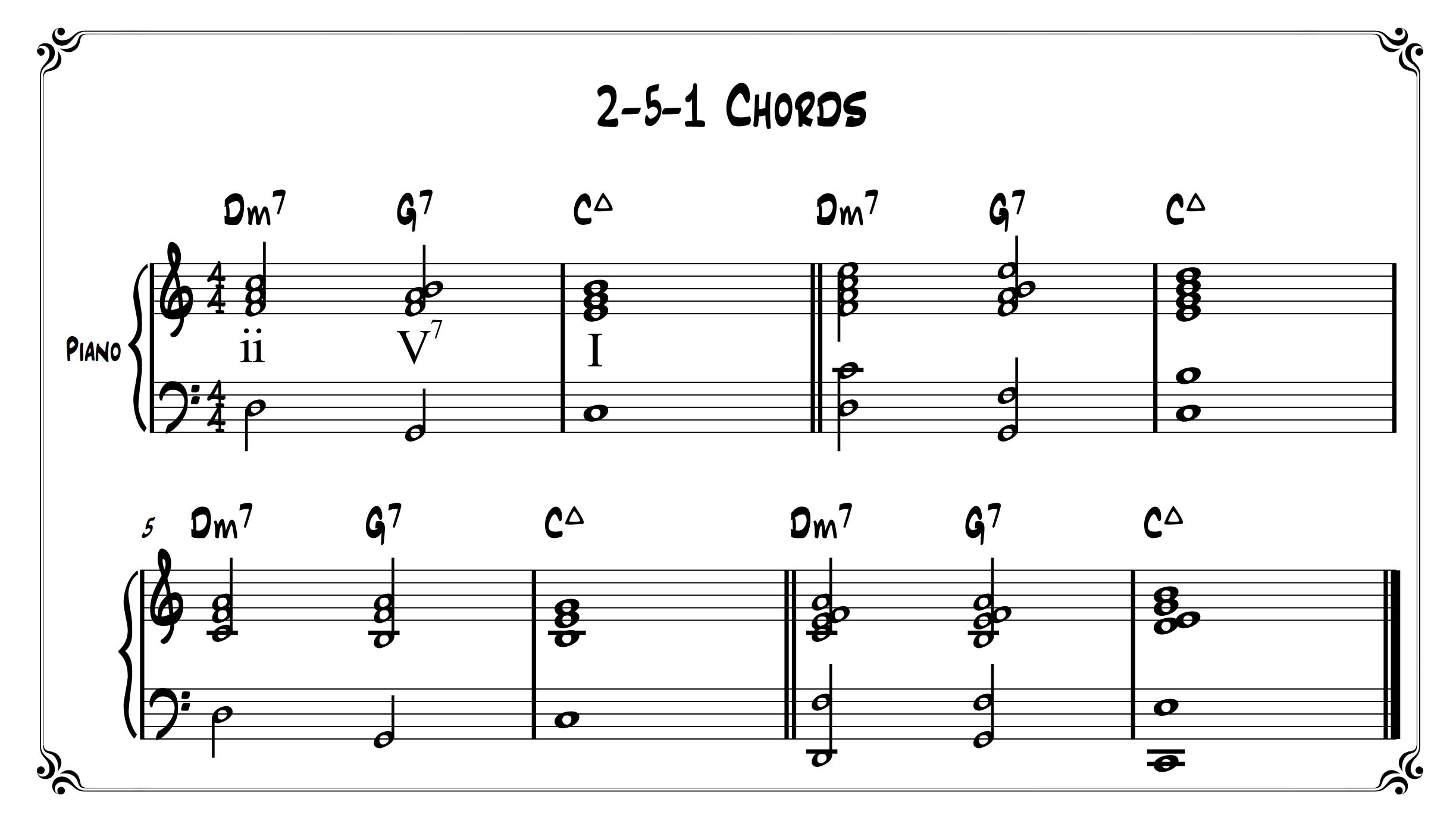Do you want to learn a chord progression that is often used in jazz and blues music? The 2-5-1 chord progression is a great choice! In this article, we will discuss what the 2-5-1 chord progression is, how to play it, and some of the benefits of learning it.
If you are a musician, this progression can be a valuable tool in your repertoire. Even if you don’t play an instrument, learning about music theory can help you better understand the structure of songs and why they sound the way they do.
What is the 2-5-1 Chord Progression and Where Does it Come From?
The 2-5-1 chord progression is one of the most commonly used progressions in all of music. It’s made up of three chords: the ii, the V, and the I, which are each built on the second, fifth and first scale degrees respectively. For example, in the key of C, the 2-5-1 progression would be D minor, G major, and C major.
This progression has a strong sense of movement and resolution, as it includes the three most important elements that make up a well-formed progression—subdominant (ii), dominant (V), and resolving to the tonic (I).
This is why it’s so popular in jazz and blues. The 2-5-1 progression can be traced back to early Delta blues, where it was used to great effect by artists including Robert Johnson and Muddy Waters. In jazz, the 2-5-1 progression is often played with an added 7th above each chord. So it would look more like ii7-V7-I. Regardless of its origins, the 2-5-1 chord progression is an essential part of many different musical styles.
How Do You Play the 2-5-1 Chord Progression On Your Instrument of Choice?
The great thing about the ii-V-I progression is that it can be played in any key, on any instrument. All you need to do is find the ii, V and I chords in the key you’re playing in.
For example, if you’re playing in the key of A minor, the ii-V-I progression would be Bdim-E-Am. If you’re playing in the key of Db major, the ii-V-I progression would be Ebmaj-Ab-Db. As long as you know your scales, finding these chords should be a breeze.
What Are Some of the Benefits of Learning the 2-5-1 Chord Progression?
There are many benefits to learning the 2-5-1 chord progression. For one, it’s a great way to learn your scales. If you can play a 2-5-1 progression in all 12 keys, you will have a strong understanding of each scale and how the chords are related to one another.
Additionally, the 2-5-1 progression is a great tool for improvisation. Once you have the chords down, you can start experimenting with different melodic and rhythmic ideas to create your own solos.
Learning the 2-5-1 chord progression is also a great way to become familiar with common jazz progressions. Many standards use this progression, so learning it will give you a head start on learning tunes. And finally, the 2-5-1 chord progression sounds great!
10 most popular songs and jazz standards that utilize the 2-5-1
- “Autumn Leaves” – This is one of the most famous jazz standards, and it utilizes the 2-5-1 progression extensively, particularly in the key of G Major/E minor.
- “Tune Up” – This jazz standard by Miles Davis is essentially an exercise in 2-5-1 progressions in multiple keys.
- “I’ve Got Rhythm” – This song by George Gershwin has been reinterpreted by many jazz musicians and its bridge contains multiple 2-5-1 progressions.
- “All The Things You Are” – This Jerome Kern tune is full of 2-5-1 progressions, making it a popular choice for jazz improvisation study.
- “Blue Moon” – The jazz standard version of this song uses a 2-5-1 progression.
- “Girl From Ipanema” – This famous bossa nova tune by Antonio Carlos Jobim uses 2-5-1 in its chorus.
- “Just Friends” – This is another standard with a variety of 2-5-1 progressions.
- “Satin Doll” – Duke Ellington’s classic tune features an extended 2-5-1 progression.
- “Stella By Starlight” – This Victor Young composition, a popular choice for many jazz musicians, also has numerous 2-5-1 progressions.
- “Fly Me to the Moon” – Bart Howard’s song, famously covered by Frank Sinatra, makes good use of the 2-5-1 progression.
Conclusion
The 2-5-1 chord progression provides a classic sound that has been used in countless songs over the years. By learning this progression in every key, you’ll be able to add a bit of jazz flair to your playing no matter what style you’re into. Check this interesting video regarding popular songs using the progression.

